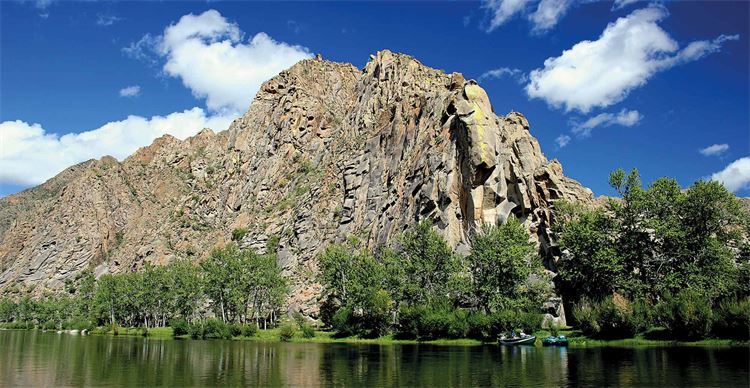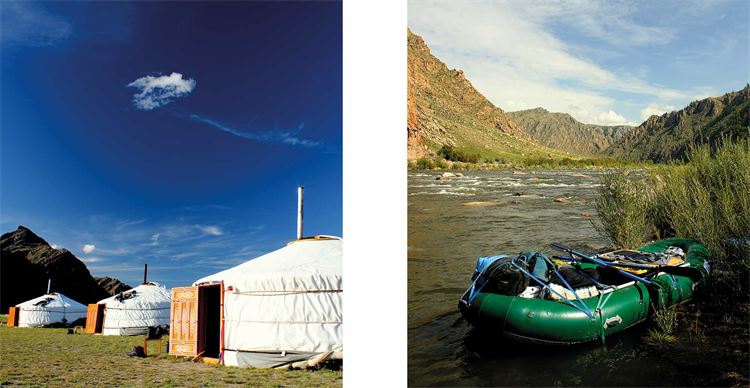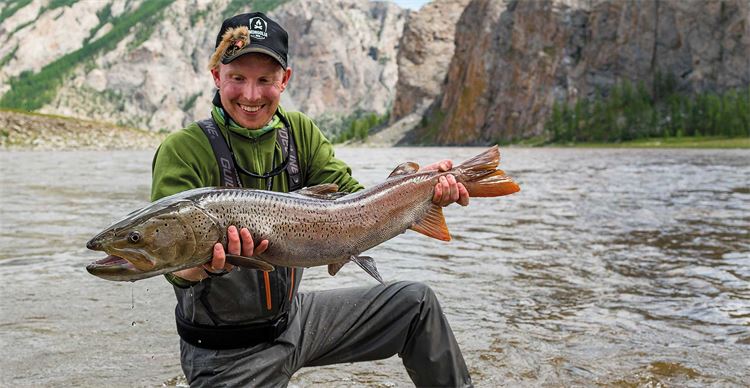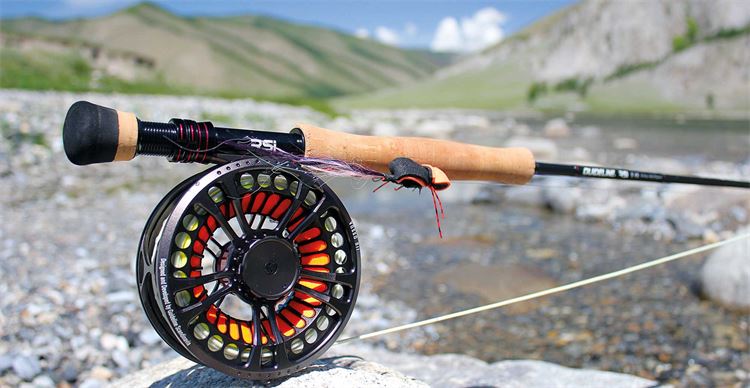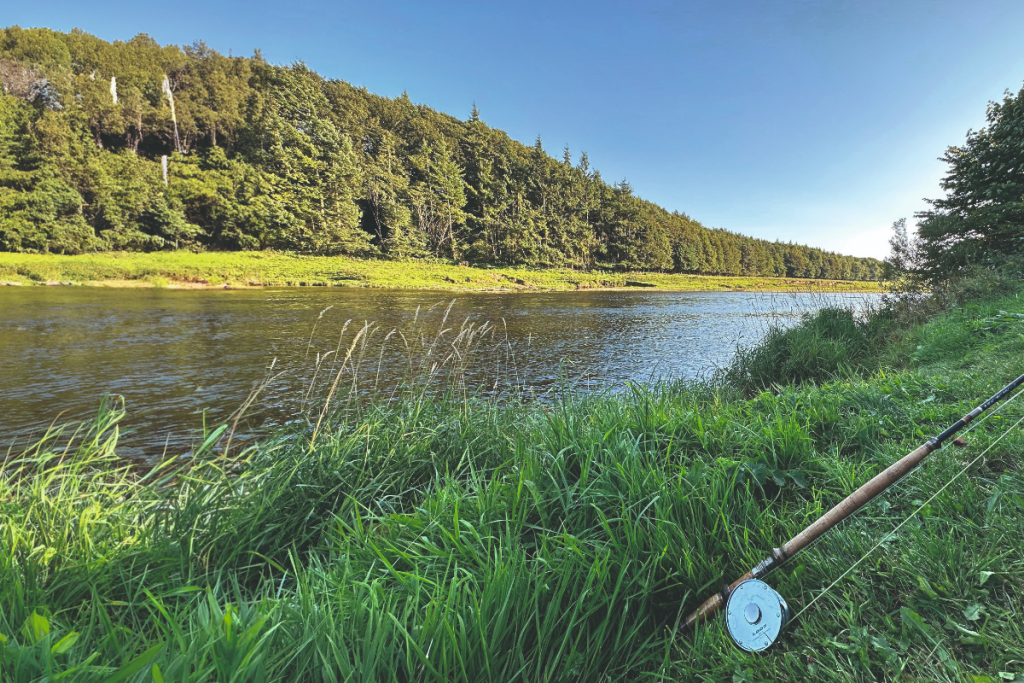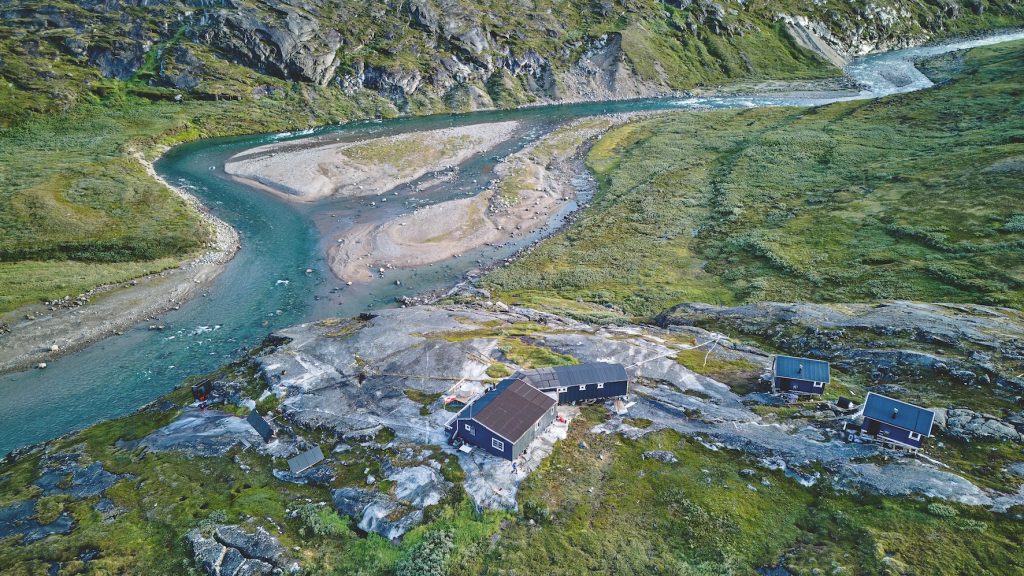Taimen on fly
Following an adventure in pursuit of taimen, it’s hard to fathom that a place like Outer Mongolia still exists. It’s just you, the wilderness, and the chance to catch the fish of a lifetime...
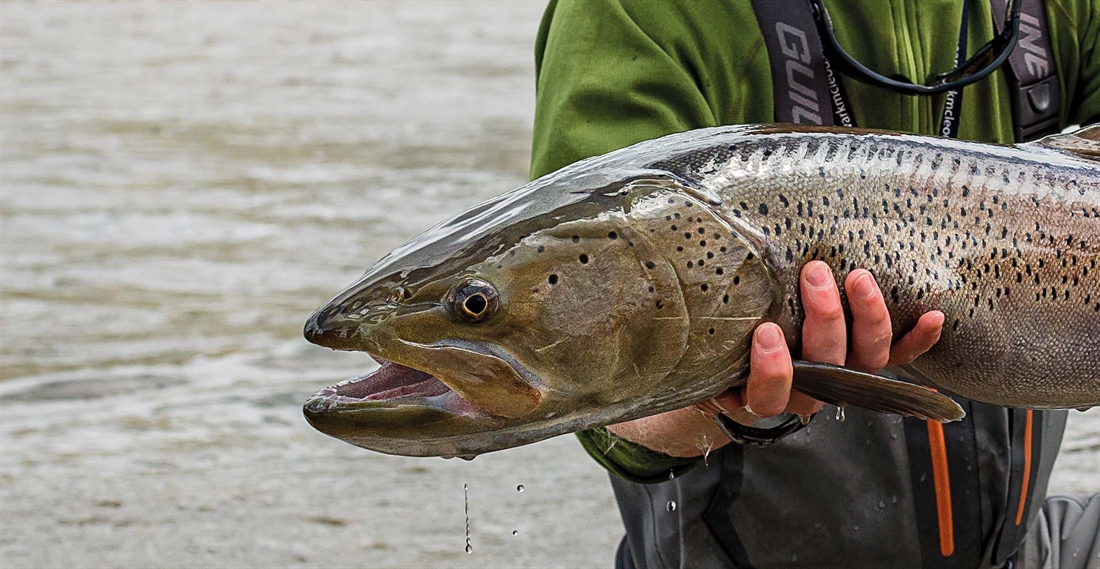
Mongolia is not a destination that often springs up on one’s travel list, but perhaps it should. Many know little about the world’s second largest land-locked country beyond stories of Genghis Khan’s empire, the Gobi Desert or the Mongol Derby. It is however a wonderful country, rich in history, surrounded by beautiful and extreme landscapes, with friendly people and, most importantly, home to a big fish called the taimen.
My first trip to Mongolia in 2015 was one of mixed success; inexperience and bad river conditions made the fishing tough but I saw glimpses of a truly incredible destination. Drifting down the river, it was difficult to remove my eyes from the stunning and imposing cliffs on one side and rolling plains on the other. The river changed with each twist and turn from turbulent, rocky whitewater to placid and wide, open pools.
As with any new destination and species, questions abound: Where do the fish live? What do they eat? How fast and deep should I fish? The list goes on. For many species there is a set of rules that can be applied to increase success, but with taimen these parameters are wide-ranging and hard to narrow down into a list of ‘dos and don’ts’.
At the end of this first trip, as I packed down my kit in the traditional accommodation on the river, I knew that I was leaving with more questions than answers. I had tamed just one taimen that week, a small one at just under 10lb, and had moved only a few others. Had the trip been a failure? Not at all; I was hooked! The fish I had seen and the explosive takes combined with the breathtaking steppe wilderness… I just knew I had to go back.
Little did I know that less than a year later I would find myself standing beside that same beautiful river. This time, though, I had a game plan. In the time away from the river I had had a chance to think about my approach, the types of water where we found fish and what seemed to trigger them. I almost felt prepared.
The taimen can be likened to many species from salmon to giant trevally but ultimately they are individual. They are ferocious eaters that spend most of their time sat in deep pools minding their own business. However, when they are hungry they are marauders that will move through the river in singles and in packs in search of anything that vaguely resembles food.
When a fish only has a short feeding window, fussy eating does not really come into it. With temperatures in winter plunging as low as -50°C in Mongolia and the rivers freezing for several months, this leaves only a few short months for the taimen to feed and spawn. Small taimen like to eat large stonefly nymphs, grasshoppers and tiny baitfish, but the big fish prefer grayling. There are large numbers of grayling in these waters and they offer the perfect snack. In addition to the grayling, taimen will rarely pass up an opportunity to eat any other sizeable meal, including rodents and birds.
For the return visit I felt more prepared; I had packed two 9ft 9wt rods for the taimen and a lighter 9ft 5wt for the lenok and grayling. I had loaded wide arbour reels with strong drags and plenty of backing capacity – one with a floating line and the other a type 3 sinker. Leaders were kept simple: 9ft 20lbs tapered leaders for taimen and 9ft 8lbs tapered leaders for the lenok and grayling. Whilst I knew the camp would provide flies, I had worked furiously in the months prior making up new concoctions. Bits of foam, feather and fur had been strapped and glued to strong hooks and my bag was now full of fishing tackle with just enough room for a couple of changes of clothes.
On the first day of fishing, I headed down to a beautiful, clear and shallow run. Whilst not prime taimen water, there were a couple of big boulders and I thought the water around them might be a place a passing taimen would sit in. The two other anglers were still grilling the guide, Tulga, for taimen information as I made my first few casts. After each swing I took a few steps down until I was in a prime position to cover the slack behind a big rock mid-river.
I made the cast, the fly landing just past the rock. It first dragged up the current before zipping downstream through the slack. Without warning, the water erupted. A reddy-brown monster sprung from its lie and crashed through the surface. I watched as my gurgler disappeared from view. Just a second or so later I felt the line pull tight and all hell broke loose.
I could hear the calls from the guys behind – even at over 100 yards away they had seen the fish hit the fly. The taimen, cartwheeling across the surface, then stuck its nose down and went on a searing run to the far bank. Backing now out of the rod, I was forced to follow. Keeping the pressure on fully, there were two or three occasions when I was convinced I was wrapped round a rock, but to my amazement this dead stop was purely the fish’s own power.
By this point, Tulga had joined me in the river and was positioning himself to net the taimen. Each time the fish saw him it changed direction, and a couple of times it made nerve-jangling head shakes on the surface. Tulga picked his moment, scooped under the fish and I watched as it folded safely into the net.
Bringing the fish into the shallows, I stood, unable to speak, hands trembling just looking at this immense fish. A true predator, it had a large head for swallowing big food, a thick wrist and a large powerful tail capable of propelling its sleek body at an alarming rate.
We measured the fish quickly, keeping him in the water between a quick couple of photos, and slid him back into the river, watching as the red shape faded into the clear riffled water. The taimen measured an incredible 48″ (123cm) and we estimated it to be between 40–45lb, the equal camp record (at the time). We had only been on the water for minutes – what would the rest of the week bring?
Needless to say, I may have caught one fish but I certainly had not cracked the code. Over the course of the week I landed just two more taimen but induced a good number of takes. I was making progress in locating and luring these fish, and from my experiences I can now recommend three key tips:
A taimen’s structure
Like many predators, taimen like to expend as little energy as possible when hunting. They use large boulders, trees, undercuts and so on to hide themselves before intercepting their prey. As anglers we want to look to target these areas with the fly; any form of broken flow or noticeable obstacles should be targeted, both in front and behind. Taimen, much like salmon, use the slow water around obstacles to conserve power, so be ready for the take as the fight from a fully-charged taimen can be testing.
How to retrieve a fly for taimen
Apex predators seldom look for the fittest of prey to hunt – they often single out the slowest or those crippled or injured. With this in mind, an angler should apply this thought to how they retrieve the fly. A constant stripping motion will probably entice a fish to follow but a taimen is unlikely to commit. If, however, you add pauses, resulting in a jerkier retrieve, this gives the fish a chance to hit the fly. A taimen often waits for these pauses before lashing out. Sometimes the first hit is just a stunning shot: if you do not hook up, stop retrieving and just let the fly sit there – the taimen will often swim back and gently take the fly in.
Perseverance is key
Fishing for large salmonids is by no means easy, but perseverance and confidence are key to success. Casting 9wt rods and big flies is testing and it can be easy to become despondent when the fishing is slow. Much like salmon fishing, though, if you work the water, put in the time and have the confidence that the next cast will be the one, you will begin to find taimen. Often takes will come in clusters. Whether this is due to favourable conditions or feeding patches I am not sure – perhaps I need to do some further research…
Now back in the real world, it is hard to fathom that a place such as Outer Mongolia still exists. A place where there are no roads and buildings, people live from the land and your source of light at night comes from the Milky Way. Life seems so easy and simple, there are no current affairs or politics. Just you, the wilderness and the chance to catch a fish of a lifetime.
If you want to go…
Aardvark McLeod arrange fly fishing holidays to several rivers in Mongolia. Each operation has been set up to work with the local community to protect the taimen and its habitat.
Cost: US$6,300 per person based on 9 nights/7 days fishing.
Flights: Air China (via Beijing) and Aeroflot (via Moscow) offer one-stop flights from the UK to Ulaanbaatar, Mongolia.
Related Articles
Get the latest news delivered direct to your door
Subscribe to Fieldsports Journal
Elevate your experience in the field with a subscription to Fieldsports Journal, the premium publication for passionate country sports enthusiasts. This bi-monthly journal delivers unparalleled coverage of game shooting, fishing and big game across the UK and beyond.
Each issue offers a stunning collection of in-depth features, expert opinions and world-class photography, all presented in a timeless yet contemporary design.
Save 10% on shop price when you subscribe, with a choice of packages that work for you. Choose from Print & Digital or Digital only with each journal delivered directly to your door or via the app every other month, plus access to past issues with the digital back issue library.






